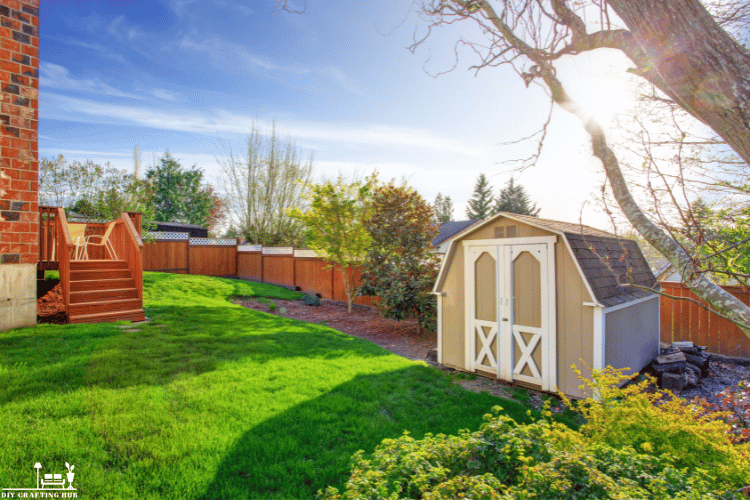Shed house presents a distinctive approach to modern living. These structures, often overlooked for their simplicity, are being transformed into stylish dwellings. Through inventive design and innovative space utilization, shed homes are becoming highly desirable. Originating from humble beginnings, these spaces are reimagined to cater to contemporary lifestyle needs.
Cottages embody minimalism while optimizing functionality. They offer an opportunity for sustainable living and architectural creativity. With versatile layouts, Cottages provide limitless possibilities for personalization and innovation. In this introduction, we’ll delve into the evolution of shed households and how they’re redefining the concept of home.
Shed Houses: Reimagining Traditional Structures for Modern Living
Shelter houses reinvent traditional structures for modern living. Infusing new life into classic home designs by blending tradition and innovation, these houses offer a fresh perspective on housing. They combine rustic charm with modern amenities. Thoughtful renovation transformed shed communities into stylish ones.
So, functional dwellings emphasise simplicity and sustainability. They highlight the beauty of raw materials and natural light. From cosy cabins or cottages to spacious retreats, shed homes cater to diverse lifestyles. Here, we’ll explore the unique characteristics that make shed homes an attractive option for modern living.
Shed Tiny House: Downsizing with Style and Functionality
Shed tiny houses redefine small living with a blend of both style and functionality. These compact dwellings provide a minimalist yet comfortable lifestyle. Embracing the downsizing trend, shed tiny houses optimize space efficiency without sacrificing aesthetics. Every corner is thoughtfully designed to serve multiple purposes. From clever storage solutions to multifunctional furniture, shed tiny houses prove that small spaces can be both chic and practical, meeting the needs of modern urban dwellers.
Designing A Shed House: Maximizing Space and Comfort
Designing your shed home requires a focus on space efficiency and comfort. Each square inch counts, so careful planning is vital. Embrace adaptable layouts to maximize functionality without sacrificing comfort. Incorporate smart storage solutions to keep clutter at bay and maintain a sense of spaciousness.
Select furniture and decor that serve multiple purposes to make the most of limited space. Utilize natural light and strategic lighting to create an inviting atmosphere. With careful design consideration, your Hut can provide both ample living space and cosy comfort.
Shed Tiny Home Interiors: Creating Cozy and Functional Living Spaces
Hut house interiors prioritize the creation of cosy yet practical living spaces. Embrace warm, inviting hues and textures to cultivate a comforting environment. Choose versatile furniture that maximizes space without compromising on style. Incorporate strategic lighting to enhance ambience and functionality throughout the space. Employ clever storage solutions such as built-in shelving and under-the-stairs compartments to minimize clutter.
Integrate natural elements like wood and stone to add rustic charm and connect with the outdoors. Customize your cabin house with meaningful decor and accents that reflect your unique style and personality. By seamlessly blending comfort and functionality, shack house interiors can provide a welcoming retreat away from the hustle of everyday life.
Exterior Enhancements: Adding Curb Appeal to Your OutHouse
Enhance the exterior of your shed home to elevate its curb appeal. Begin by selecting a harmonious colour scheme that enhances the overall aesthetic. Introduce charming details like window boxes or decorative shutters to put visual interest. Moreover, incorporate landscaping elements like flower beds or potted plants to soften the exterior. Consider adding a porch or patio space to extend outdoor living opportunities. By attending to these details, you can elevate the exterior of your shed home and create a welcoming first impression.

Tiny House Shed Conversion: Tips and Tricks for DIY Enthusiasts
- Planning and Preparation: Before diving in, carefully evaluate the structure’s condition and draft out your vision. Consider factors like insulation, plumbing, and electrical needs.
- Creative Design Solutions: Embrace creativeness to maximize space and functionality. investigate loft beds, foldable furniture, and modular storage options to make the most of limited square footage.
- Sustainable Upgrades: Include eco-friendly materials and energy-efficient appliances to lessen carbon footprint. Consider solar panels, rainwater harvesting systems, and passive heating and cooling techniques.
- Personalization and Style: Infuse your personality into the design with unique finishes, decor, and landscaping. Whether it’s a cosy reading nook or a lively accent wall. Your hut house reflects your preferences and lifestyle.
How Can I Put a Shed Right Next to My House?
When considering placing a shed next to your home, several factors come into play. Begin by examining local zoning regulations to ascertain any restrictions on shed placement. Verify that the proximity of the shed doesn’t obstruct access or drainage on your property. Assess the visual impact, aiming for harmony with your home’s architecture and landscaping.
Factor in practical considerations like sunlight exposure and privacy. Through proper planning and adherence to regulations. Furthermore, situating a shelter next to your house can offer convenient storage or additional living space. So, enhancing both the functionality and aesthetics of your property.
Tiny House Shed: Innovative Solutions for Sustainable Living
- Compact Design: Tiny house sheds employ compact design principles to maximize space efficiency while minimizing environmental impact.
- Off-Grid Capabilities: Many tiny house sheds are outfitted with off-grid systems like solar panels, composting toilets, and rainwater harvesting. Additionally, enabling residents to live sustainably and autonomously.
- Multi-Functional Spaces: Despite their small size, tiny house sheds often feature multi-functional spaces that serve as living areas, bedrooms, kitchens, and even workspaces, demonstrating creative use of limited square footage.
- Resource-Efficient Materials: Builders of tiny house sheds prioritize the use of sustainable and resource-efficient materials, such as reclaimed wood, recycled insulation, and low-VOC paints, reducing their carbon footprint.
- Mobility: Some tiny house sheds are designed to be mobile, offering the flexibility to relocate and minimize environmental impact by reducing the need for permanent infrastructure.
- Community Living: Tiny house sheds can cultivate a sense of community through shared amenities, communal gardens, and collaborative living spaces. Furthermore, fostering sustainable practices and social connections among residents.
Shed Home Regulations: Understanding Zoning and Building Codes
Understanding zoning and building codes is crucial for any shed line project. Before beginning construction, conduct thorough research on local zoning regulations to confirm the permissibility of shed families on your property. Be aware of any restrictions on size, placement, or appearance. Moreover, familiarize yourself with building codes to adhere to structural, safety, and utility requirements.
This includes considerations for foundation types, insulation standards, and electrical wiring. When in doubt, consult with professionals like architects, contractors, or local authorities to navigate regulations effectively. Compliance with zoning and building codes ensures a seamless and legally compliant hut house project.

Conclusion
In conclusion, shelter houses present a versatile and sustainable approach to contemporary living. From tiny shed houses to inventive conversions, these structures reimagine traditional spaces with creativity and functionality. It’s crucial to understand zoning and building codes to navigate regulations and ensure a seamless project process. Moreover, placement options for lean-to houses require careful consideration of factors.
Such as zoning restrictions, property layout, aesthetic impact, and practical concerns like sunlight exposure and privacy. By embracing compact design, off-grid capabilities, resource-efficient materials, mobility, and community living, hut houses exemplify innovative solutions for sustainable living. Whether placed adjacent to existing homes or as standalone structures.
Shed houses can provide convenient storage and additional living space. Or even serve as full-time residences, enhancing the functionality and aesthetics of properties while minimizing environmental impact. With proper planning and adherence to regulations, shed dynasties offer endless possibilities for transforming simple spaces into stylish, eco-friendly dwellings.
FAQs
How much does it cost to build a shed hut?
The cost of building a shed home varies depending on factors such as size, location, materials used, and labour costs. Generally, shed homes can be more affordable than traditional homes due to their smaller size and simpler construction.
Do cabin houses require building permits?
Yes, cabin houses typically require building permits, especially if they are intended for full-time living. So, it’s crucial to check with local authorities to ensure compliance with all necessary permits and regulations.
What utilities can be connected to a tiny home?
Tiny houses can be connected to utilities such as electricity, water, and sewer systems if available. Alternatively, many tiny homes incorporate off-grid systems, including solar power, rainwater harvesting, and composting toilets, for sustainable living.








